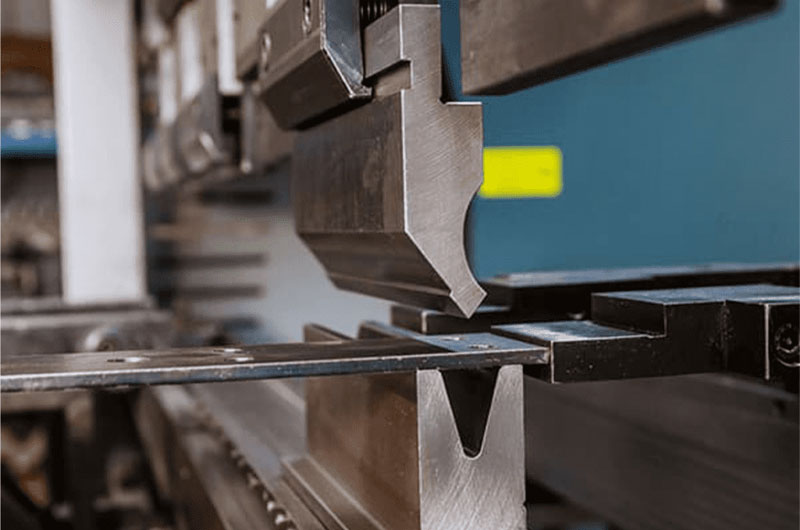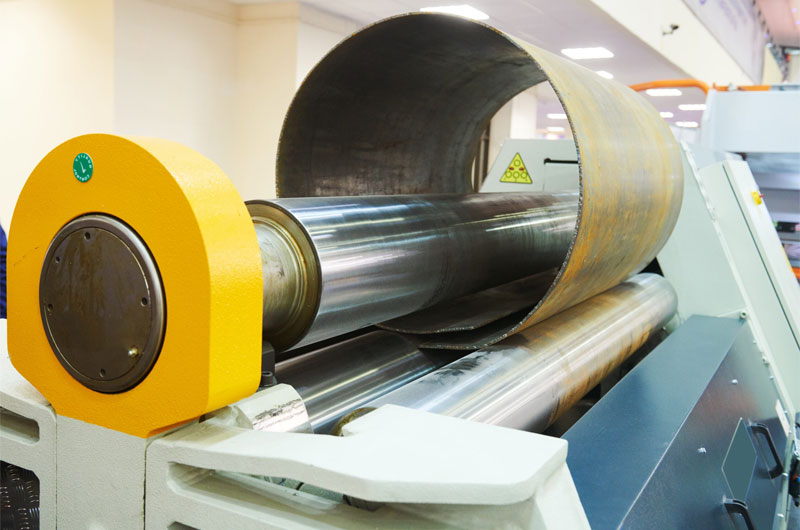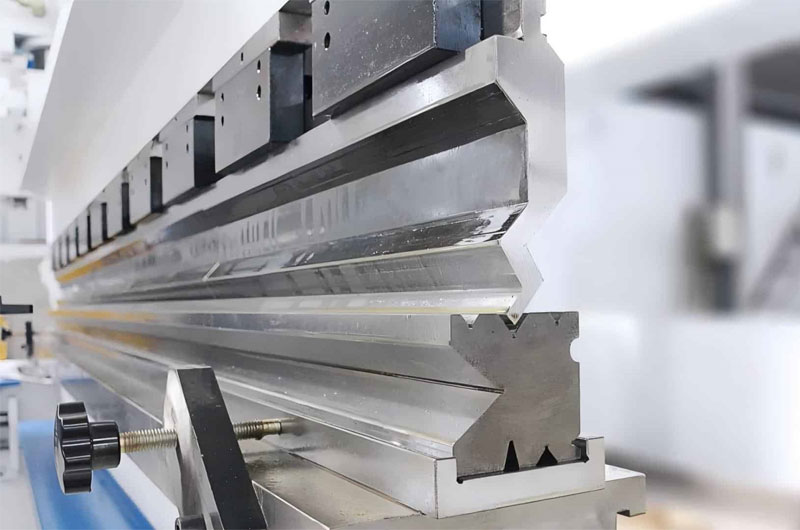Whether creating simple brackets or complex structural components, metal bending requires the right tools to ensure precision, consistency, and structural integrity. There are various metal bending tools available, each designed for specific materials, thicknesses, and project needs.
Here’s a look at some of the most common metal bending tools used today, along with their pros and cons.
1. Press Brakes

Press brakes are among the most widely used machines for metal bending. They use a punch and die to create bends at specific angles and shapes.
- Types: Manual, hydraulic, mechanical, and CNC press brakes.
- Materials: Suitable for bending steel, stainless steel, aluminum, and more.
- Applications: Sheet metal parts, brackets, enclosures, and frames.
Pros:
- High precision and consistency for complex bends.
- Capable of bending a wide range of materials and thicknesses.
- Versatile, capable of handling both simple and intricate designs.
Cons:
- Expensive to purchase and maintain, especially CNC models.
- Requires skilled operators for best results.
- Limited to certain bend radii, especially on thicker materials.
2. Sheet Metal Hand Brakes
Hand brakes are simpler, manually operated tools ideal for lighter bending work.
- Function: Allow users to manually bend sheet metal by clamping it and lifting a bending leaf.
- Materials: Thin sheets of aluminum, brass, copper, and light steel.
- Applications: HVAC ductwork, small enclosures, and craft projects.
Pros:
- Cost-effective for small workshops or DIY use.
- Simple to operate, requiring little technical expertise.
- Portable and lightweight, allowing for easy transportation.
Cons:
- Limited to thinner materials and simpler bends.
- Less accurate and can result in inconsistent bends compared to press brakes.
- Labor-intensive and slower for larger production runs.
3. Roll Benders (Rollers)

Roll benders or plate rollers are used to create smooth, curved bends and cylindrical shapes.
- Design: Consist of three rollers (pyramidal or pinch types) that gradually shape the metal as it passes through.
- Materials: Steel plates, aluminum sheets, and other metals.
- Applications: Pipes, tanks, barrels, and architectural elements.
Pros:
- Ideal for large radius and smooth curves.
- Can handle a wide range of materials and thicknesses.
- Perfect for creating cylindrical shapes that cannot be achieved with press brakes.
Cons:
- Not suitable for sharp, precise bends or intricate shapes.
- Requires setup time and adjustment for different projects.
- Limited in terms of the types of bends it can produce compared to other bending methods.
4. Tube and Pipe Benders
Tube and pipe benders are specialized for creating accurate bends in round or square tubing without causing collapse or crimping.
- Types: Manual, hydraulic, and electric benders.
- Materials: Stainless steel, copper, aluminum, and carbon steel tubes.
- Applications: Automotive exhaust systems, handrails, furniture frames, and plumbing.
Pros:
- Perfect for bending tubes and pipes without distorting the material.
- Can achieve a wide range of bend angles and radii.
- Ideal for creating clean, smooth bends in tubular components.
Cons:
- Not suitable for flat sheet metal or non-tubular components.
- Hydraulic or electric models can be expensive.
- Slower for high-volume production.
5. Bar Benders
Bar benders are designed to bend solid bars of metal into various shapes.
- Types: Manual bar benders and powered bar benders.
- Materials: Reinforcing bars (rebar), flat bars, and square bars.
- Applications: Construction (especially rebar bending for concrete reinforcement), artistic metalwork, and structural frameworks.
Pros:
- High precision for bending solid metal bars.
- Ideal for reinforcing steel bars (rebar) in construction projects.
- Powered bar benders are fast and efficient for large volumes.
Cons:
- Not suitable for thin sheet metals.
- Manual models can be physically demanding and time-consuming.
- Limited flexibility compared to other tools, especially for complex or curved shapes.
6. Angle Benders
Angle benders, or section benders, are used to bend metal profiles like angle iron, T-profiles, and U-channels.
- Operation: Similar to roll benders but adapted for profile shapes.
- Materials: Steel, aluminum, and other structural profiles.
- Applications: Metal frames, supports, railings, and architectural features.
Pros:
- Excellent for bending structural profiles like angle irons.
- Offers a high level of accuracy for angle bends.
Cons:
- Only suitable for specific profile shapes (angle, T, U).
- Can be slow for larger volumes.
- Limited to bending along the length of the profile.
7. Vices and Forming Blocks
For simpler tasks, basic tools like vices combined with form blocks can be used to manually bend metal into desired shapes.
- Method: The metal is clamped in the vice and bent around a form or mandrel.
- Materials: Soft metals like aluminum, brass, or thin steel.
- Applications: Prototyping, repair work, small-scale production.
Pros:
- Extremely low cost and easy to use.
- Portable and simple, making it great for DIY projects.
- Ideal for custom or one-off metal bending jobs.
Cons:
- Limited to small-scale operations and simple shapes.
- Requires significant manual labor.
- Not suitable for high-precision or high-volume work.
Conclusion
Choosing the right metal bending tool depends on the material type, thickness, bend radius, volume of work, and precision requirements.
For mass production and high-precision work, tools like CNC press brakes and hydraulic tube benders are essential. For small-scale or custom projects, hand brakes, vices, and simple roll benders may suffice.

